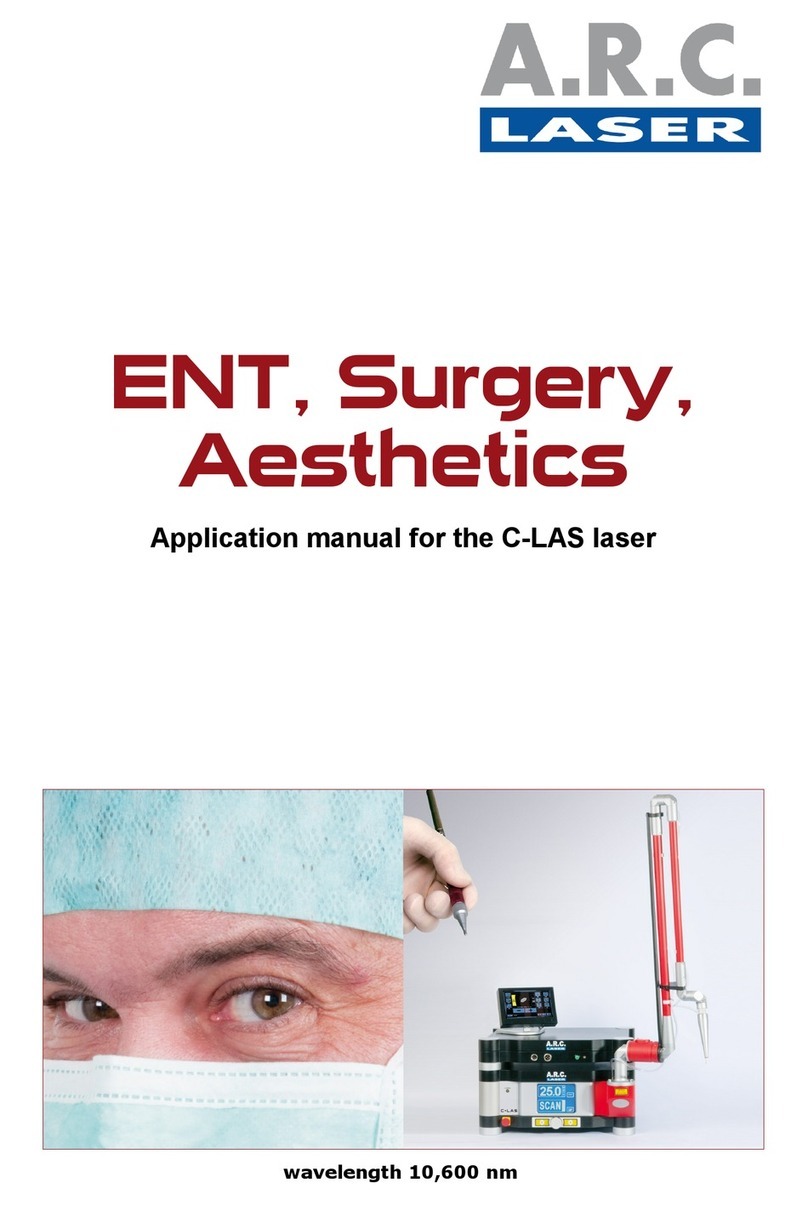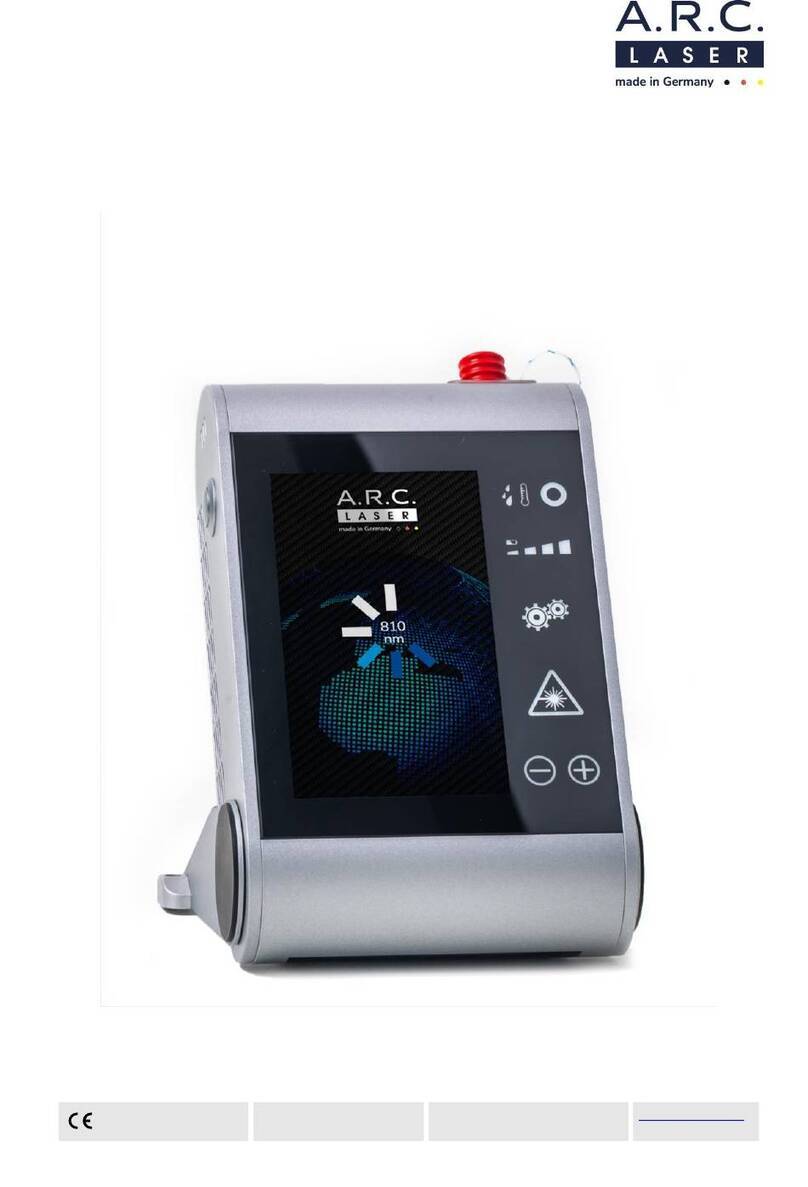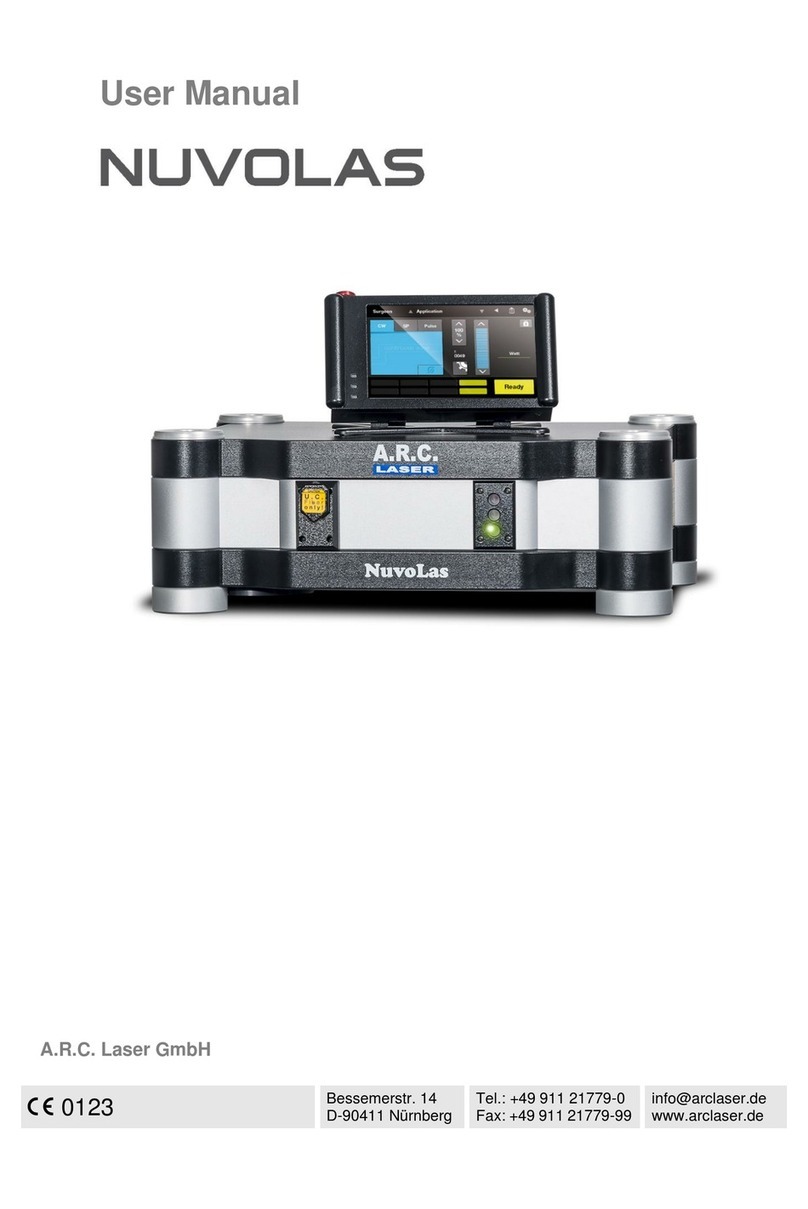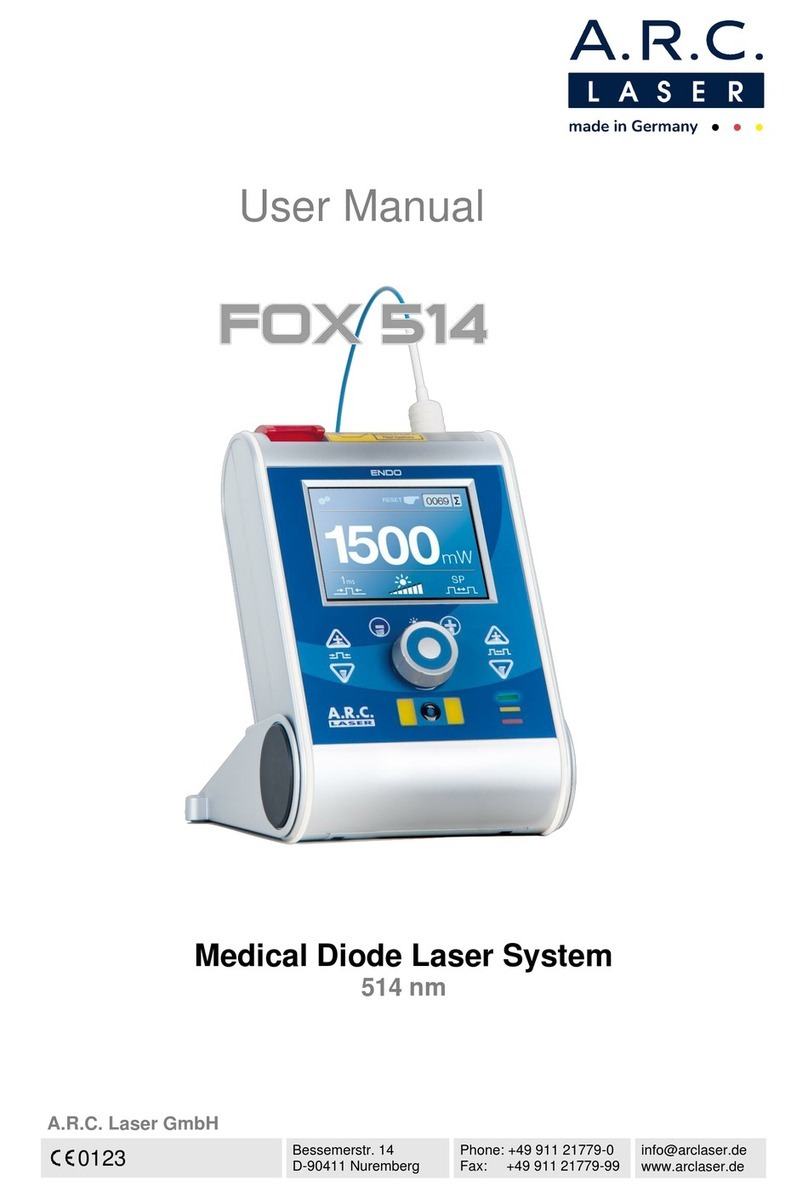1Introduction......................................................................................................................................5
1.1 Marking and symbols................................................................................................................5
1.2 Intended use .............................................................................................................................6
1.3 General contraindications .........................................................................................................6
1.4 Theory and technical set-up......................................................................................................7
2Transport and storage.....................................................................................................................8
2.1 Shipping and unpacking the device ..........................................................................................8
2.2 Return shipment........................................................................................................................9
3Set-up and installation ..................................................................................................................10
3.1 Installation site ........................................................................................................................10
3.2 Room requirement ..................................................................................................................10
3.2.1 Marking access points ........................................................................................................10
3.2.2 Window shielding................................................................................................................10
3.2.3 Reflecting surfaces .............................................................................................................11
3.3 Electrical connection...............................................................................................................11
4Safety information .........................................................................................................................12
4.1 General....................................................................................................................................12
4.2 Eye safety................................................................................................................................13
4.3 Electrical protection.................................................................................................................13
4.4 Explosion and fire hazard........................................................................................................14
4.5 Protection against undesired radiation....................................................................................14
4.6 NOHD safety distance.............................................................................................................14
4.7 CE-Regulations.......................................................................................................................14
4.8 RoHS3-Regulations ................................................................................................................14
4.9 Protective housing...................................................................................................................15
4.10 Connectors and switches........................................................................................................15
4.11 External interlock switch..........................................................................................................16
4.12 Safety-Shutter / Aiming beam.................................................................................................16
4.13 Manual reset ...........................................................................................................................16
4.14 Reset by power failure ............................................................................................................16
4.15 Lables and markings...............................................................................................................17
4.16 Operating conditions ...............................................................................................................18
4.17 Electromagnetic compatibility..................................................................................................18
5Advice for users.............................................................................................................................20
5.1 Technical instruction ...............................................................................................................20
5.2 Laser-Safety-Training..............................................................................................................20
5.3 Medical instruction ..................................................................................................................20
5.4 Device parts and accessories.................................................................................................20
5.4.1 Instrument table..................................................................................................................21
5.4.2 Foot Switch (optional).........................................................................................................21
5.4.3 Slit lamp adaption of the laser ............................................................................................22
5.4.4 Combinations......................................................................................................................23
6Operation........................................................................................................................................24
6.1 Preparation..............................................................................................................................26
6.2 Starting the laser.....................................................................................................................26
6.3 Programs and settings ............................................................................................................27
6.3.1 Main menu..........................................................................................................................27
6.3.2 Energy settings...................................................................................................................28
6.3.3 Pulse length settings...........................................................................................................28
6.3.4 Frequency/ pulse pause settings........................................................................................28
6.3.5 APL Mode (All Pulse Laser) (optionally).............................................................................29
6.3.6 Pulse counter......................................................................................................................29
6.4 Other settings..........................................................................................................................30
6.4.1 Password............................................................................................................................31
6.4.2 Info menu............................................................................................................................31
6.5 Laser STANDBY / READY......................................................................................................31
6.6 Release laser radiation ...........................................................................................................32
6.7 Treatment................................................................................................................................32

































